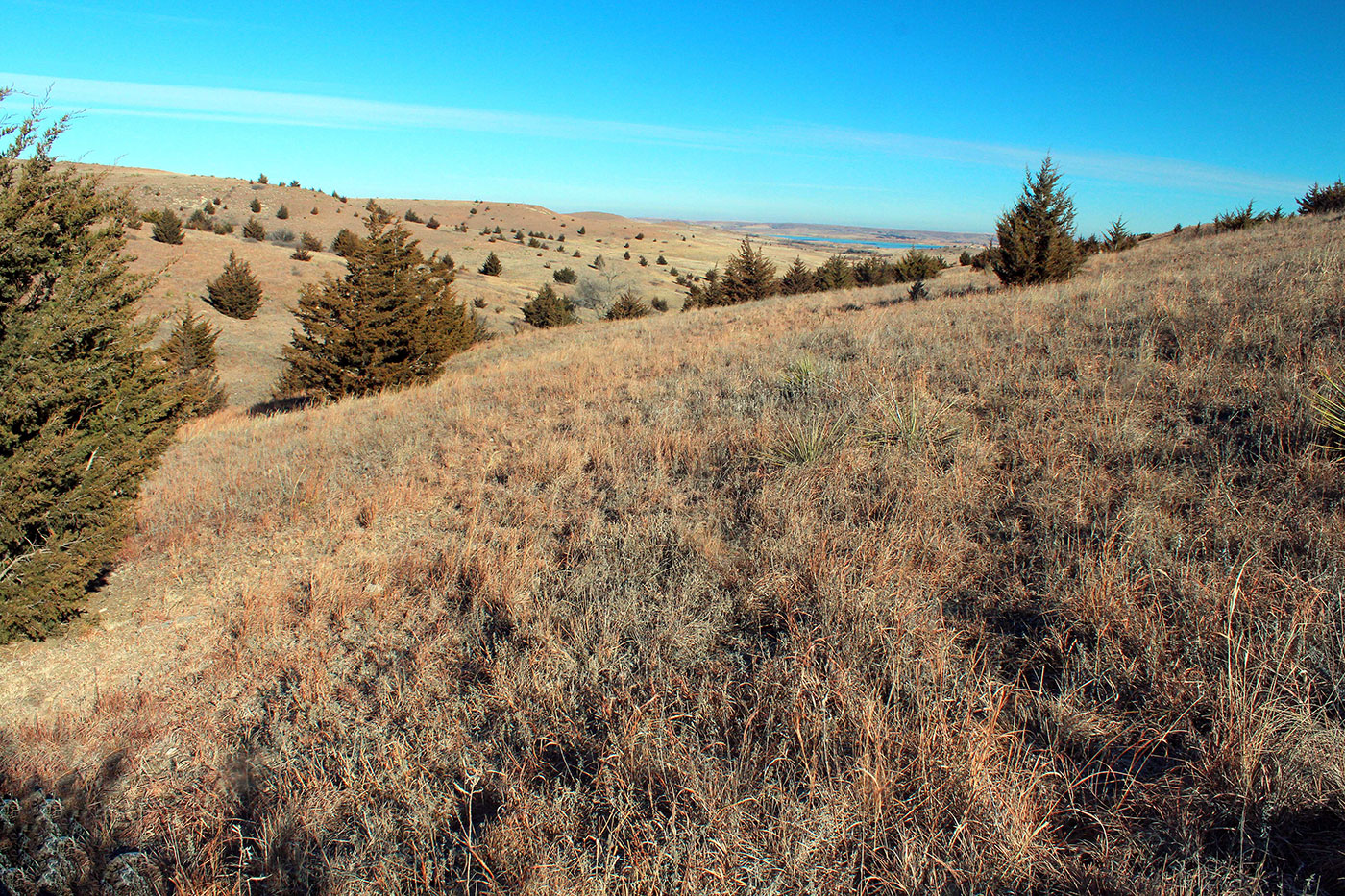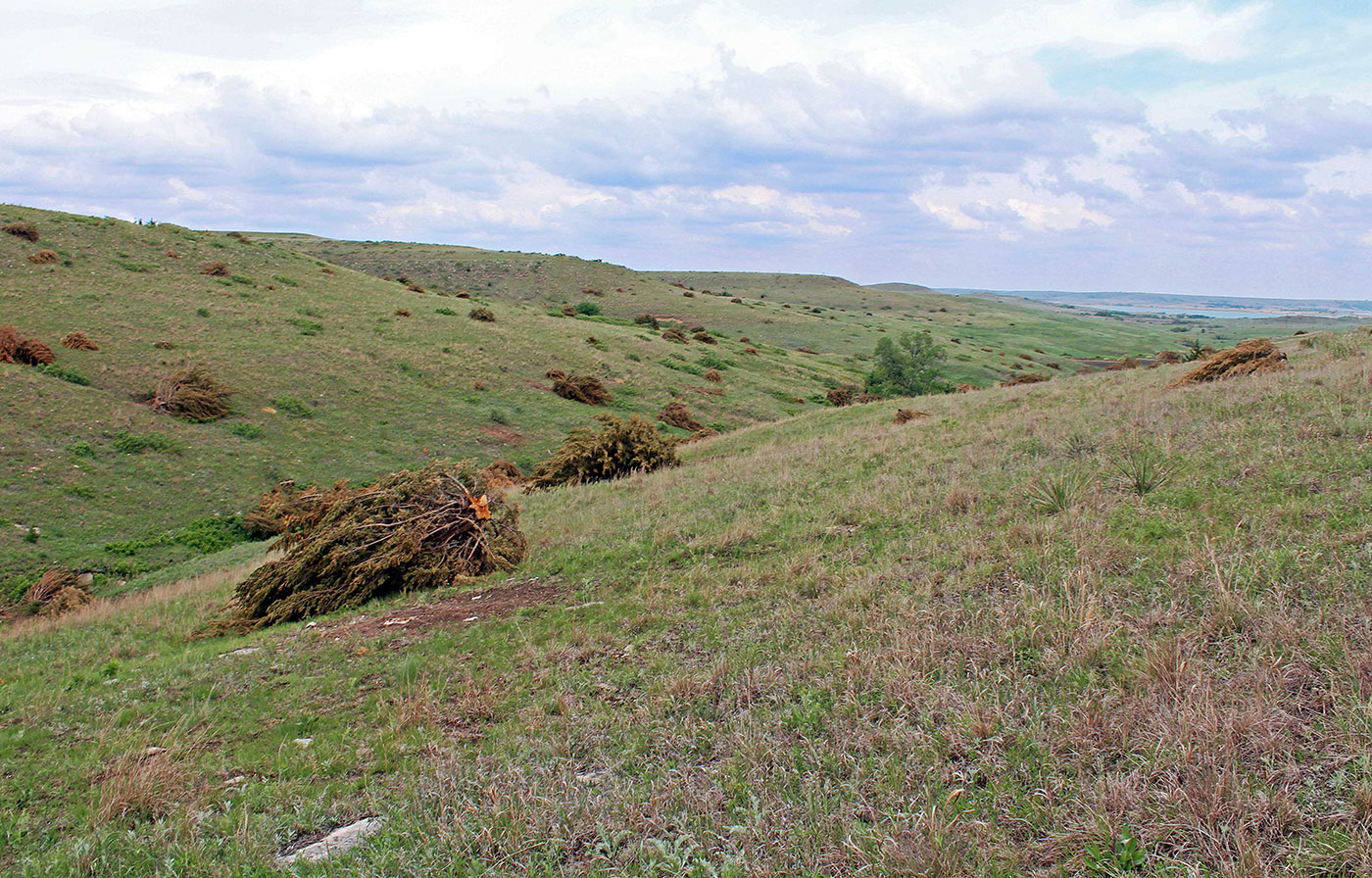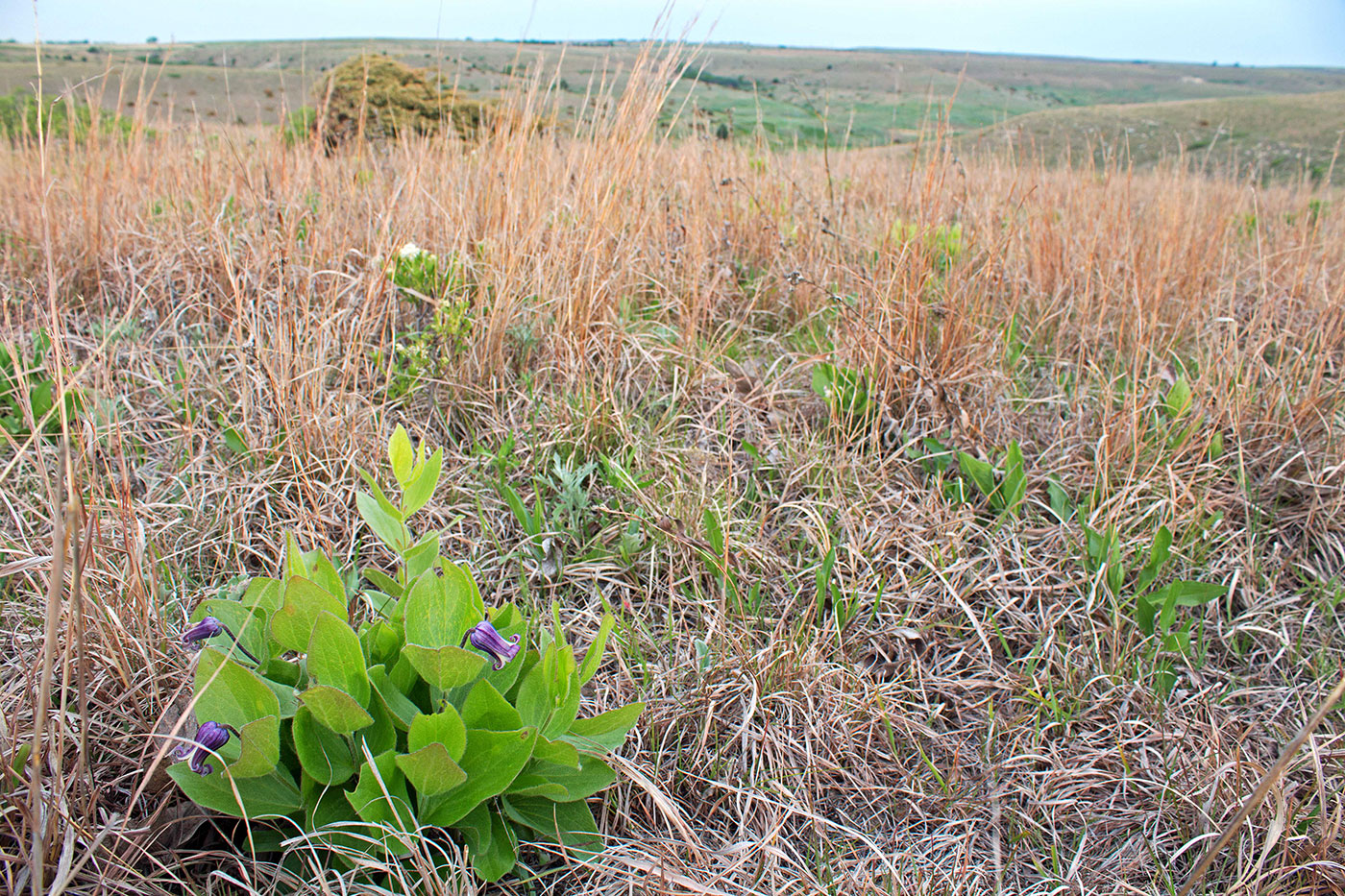| Type | CEC-support Ranch Pilot |
| Organization | JP Sons LLC |
| Country | USA |
| Region | Russell County, Kansas |
| Grass Type | Mixed grass |
| # of head of cattle | 5,000 |
| Hectares | 2,833 |
| Language | English |
| Date modified | May 2015 |
The goal of the project for JP Sons LLC was to improve the grassland ecosystem for livestock grazing and wildlife. It focused on 618 hectares of the ranch, located in the southern region of the Kansas Partners for Fish and Wildlife, North Central Prairies focus area. The site is located near the Wilson Reservoir, where the prairie uplands have been impacted by fragmentation and an increasing encroachment of woody species.
Eastern red cedar (Juniperus virginiana), for example, is a highly invasive native woody tree that encroaches in the absence of fire. Most of the western half of Kansas rangelands has not been subjected to fire periodically since settlement so eastern red cedar is quickly taking over hundreds of thousands of hectares.
In this project, the landowner implemented restoration practices such as tree removal, prescribed burning, and a grazing management system. In particular, the eastern red cedar was mechanically removed by clipping or sawing, facilitating the restoration of the native prairie plant community and helping to reduce soil erosion, improve water cycling and restore habitat for grassland and wetland species, as well as improving onsite and downstream water quality. Later in 2015, JP Sons LLC also plans to do prescribed burning on the site, establish a rotational grazing system—dividing the pasture into six paddocks using cross-fencing, and add a waterline and tanks.
Bird species such as Greater prairie chicken, Grasshopper sparrow, Dickcissel, Short-eared owl, Upland sandpiper, Bobwhite quail, and Red-headed woodpecker directly benefit from the implementation of these beneficial practices. Migratory waterfowl and shorebirds, as well as numerous fish species, also benefit indirectly.
Project partners included the Commission for Environmental Cooperation, Kansas Grazing Lands Coalition, US Department of Agriculture-Natural Resources Conservation Service, and the US Fish and Wildlife Service.


